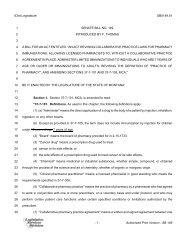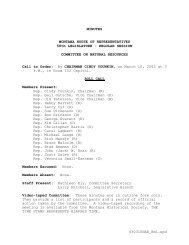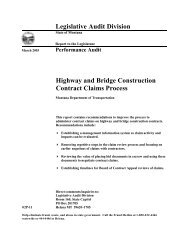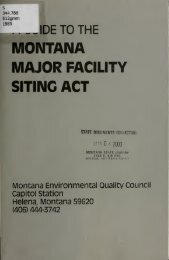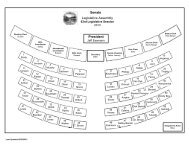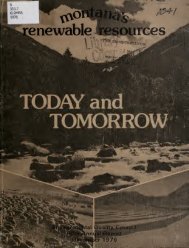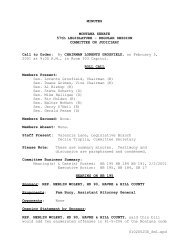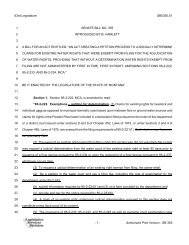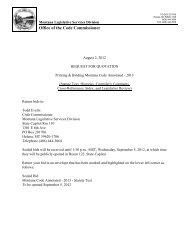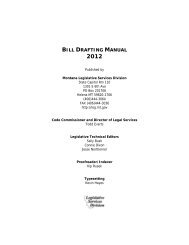Public Comment. Volume III - Montana Legislature
Public Comment. Volume III - Montana Legislature
Public Comment. Volume III - Montana Legislature
Create successful ePaper yourself
Turn your PDF publications into a flip-book with our unique Google optimized e-Paper software.
Impact Analysis Studies and Proposed Mitigation Approach Page 6<br />
iv) Zooplankton availability and species composition<br />
v) Survival to first stockable size (1 -2")<br />
vi) Survival to each successive stockable size (1 -2" intemals )<br />
At each phase, key factors will be identified that already affect production variation so<br />
that, in the event of a loss, these factors can either be ruled out or attributed as part of the<br />
loss evaluation process. These factors will be chosen based on existing hatchery<br />
management literature, potential for affecting production, available accuracy of<br />
measurement, and their ability to be measured over an extended time range since they<br />
will need to be monitored consistently throughout the baseline study, during construction,<br />
and during operation to be of value. If additional key factors, concerns, and issues are<br />
identified during the study, they would be evaluated by the director of the studies,<br />
brought to the mitigation committee (see section 4.1) with recommendations, and a<br />
-. decision would be made as to what action should be taken.<br />
The baseline study will focus on walleye, northern pike, and bass (large and smallmouth)<br />
since they comprise more than 95% of annual production. However, the study will also<br />
evaluate success rates for other regularly produced game fish such as channel catfish,<br />
tiger muskie, and rainbow trout. Additional efforts will be necessary to quantify<br />
acceptable production levels for infrequently required species (fathead minnow, sturgeon,<br />
cisco, etc.). Some of the information on acceptable production levels for infrequently<br />
produced species may be available through data exchanges with similar hatcheries<br />
throughout the U.S.<br />
As described previously, the end result of these studies will be a statistically-based model<br />
that can aid MT DFWP in discerning which factors affect production success variation at<br />
the hatchery. It is the intent that the model will not only determine if construction and<br />
operation of the TRR have caused impacts but to also assist in identifying the factors and<br />
level of impact that the TRR has caused resulting in an adverse affect or reduced<br />
production. The model is expected to predict a range of expected production success<br />
given the set of factors for a production cycle. It will be an important tool to determine if<br />
variation in production is being caused by hatchery operations or construction and<br />
operation of the TRR.<br />
The baseline study related to hatchery operations will be performed on-site at MCFH and<br />
will be incorporated into the regular operations of the hatchery. Efforts will be made to<br />
minimize adjustments in established hatchery protocols or routines so that the study can<br />
be continued once construction and operation of the railway has begun. Current hatchery<br />
staff should not be expected to perform work related to data gathering and analysis.<br />
However, if additional work tasks or responsibilities are required by MT DFWP<br />
employees for studies or mitigation related issues, compensation for additional hours,<br />
materials, or equipment should be the responsibility of TRRC.<br />
3.1.2 Impact Studies<br />
EQC Eminent Domain Study -227-



